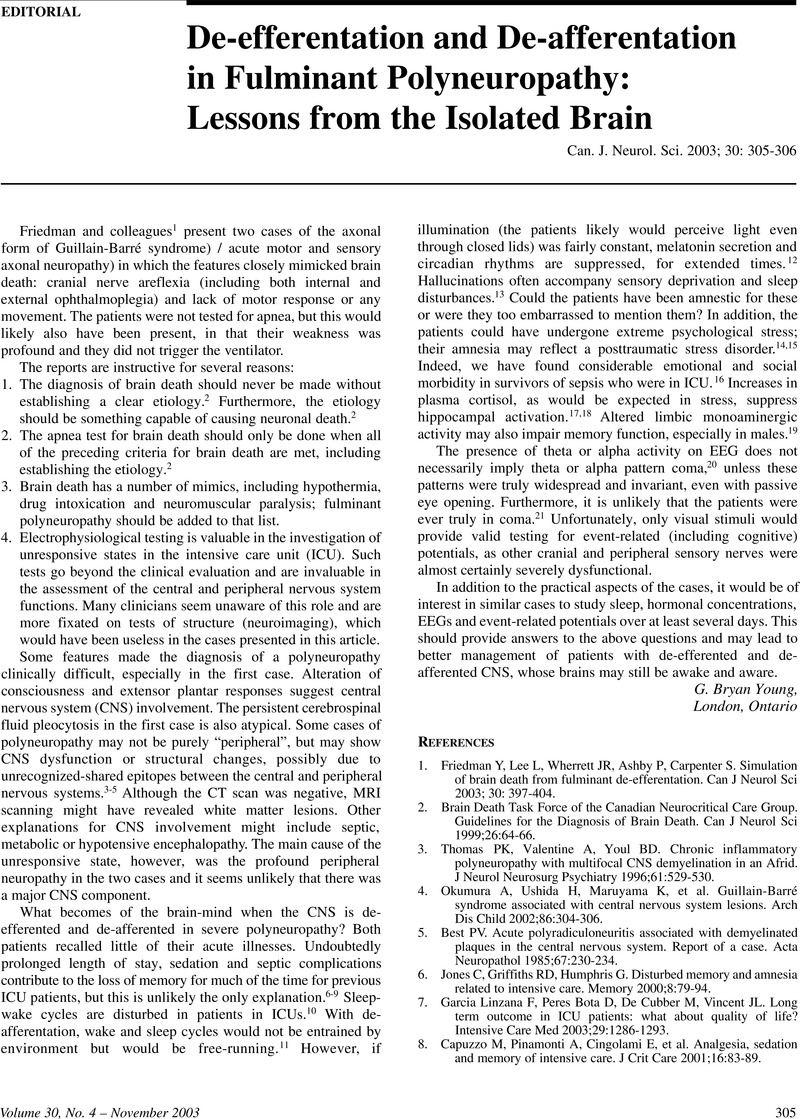Crossref Citations
This article has been cited by the following publications. This list is generated based on data provided by Crossref.
Brogan, Michael E.
and
Provencio, J. Javier
2014.
Spectrum of catastrophic brain injury: Coma and related disorders of consciousness.
Journal of Critical Care,
Vol. 29,
Issue. 4,
p.
679.
Kung, Nathan H.
Dhar, Rajat
and
Keyrouz, Salah G.
2015.
Diffuse leptomeningeal carcinomatosis mimicking brain death.
Journal of the Neurological Sciences,
Vol. 352,
Issue. 1-2,
p.
132.
Greer, David M.
Shemie, Sam D.
Lewis, Ariane
Torrance, Sylvia
Varelas, Panayiotis
Goldenberg, Fernando D.
Bernat, James L.
Souter, Michael
Topcuoglu, Mehmet Akif
Alexandrov, Anne W.
Baldisseri, Marie
Bleck, Thomas
Citerio, Giuseppe
Dawson, Rosanne
Hoppe, Arnold
Jacobe, Stephen
Manara, Alex
Nakagawa, Thomas A.
Pope, Thaddeus Mason
Silvester, William
Thomson, David
Al Rahma, Hussain
Badenes, Rafael
Baker, Andrew J.
Cerny, Vladimir
Chang, Cherylee
Chang, Tiffany R.
Gnedovskaya, Elena
Han, Moon-Ku
Honeybul, Stephen
Jimenez, Edgar
Kuroda, Yasuhiro
Liu, Gang
Mallick, Uzzwal Kumar
Marquevich, Victoria
Mejia-Mantilla, Jorge
Piradov, Michael
Quayyum, Sarah
Shrestha, Gentle Sunder
Su, Ying-ying
Timmons, Shelly D.
Teitelbaum, Jeanne
Videtta, Walter
Zirpe, Kapil
and
Sung, Gene
2020.
Determination of Brain Death/Death by Neurologic Criteria.
JAMA,
Vol. 324,
Issue. 11,
p.
1078.
Teitelbaum, Jeanne
and
Leeies, Murdoch
2022.
Death Determination by Neurologic Criteria.
p.
213.



